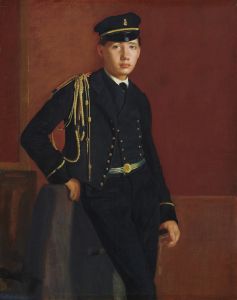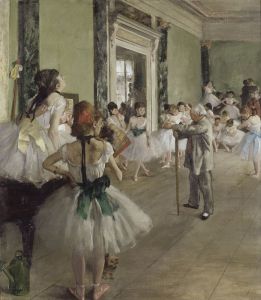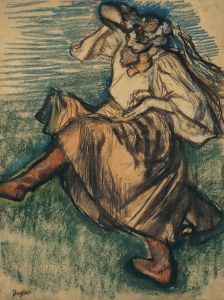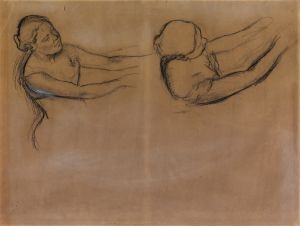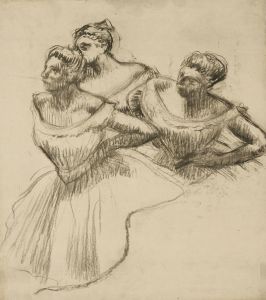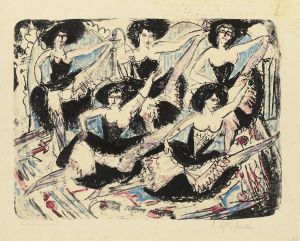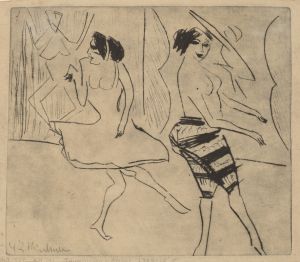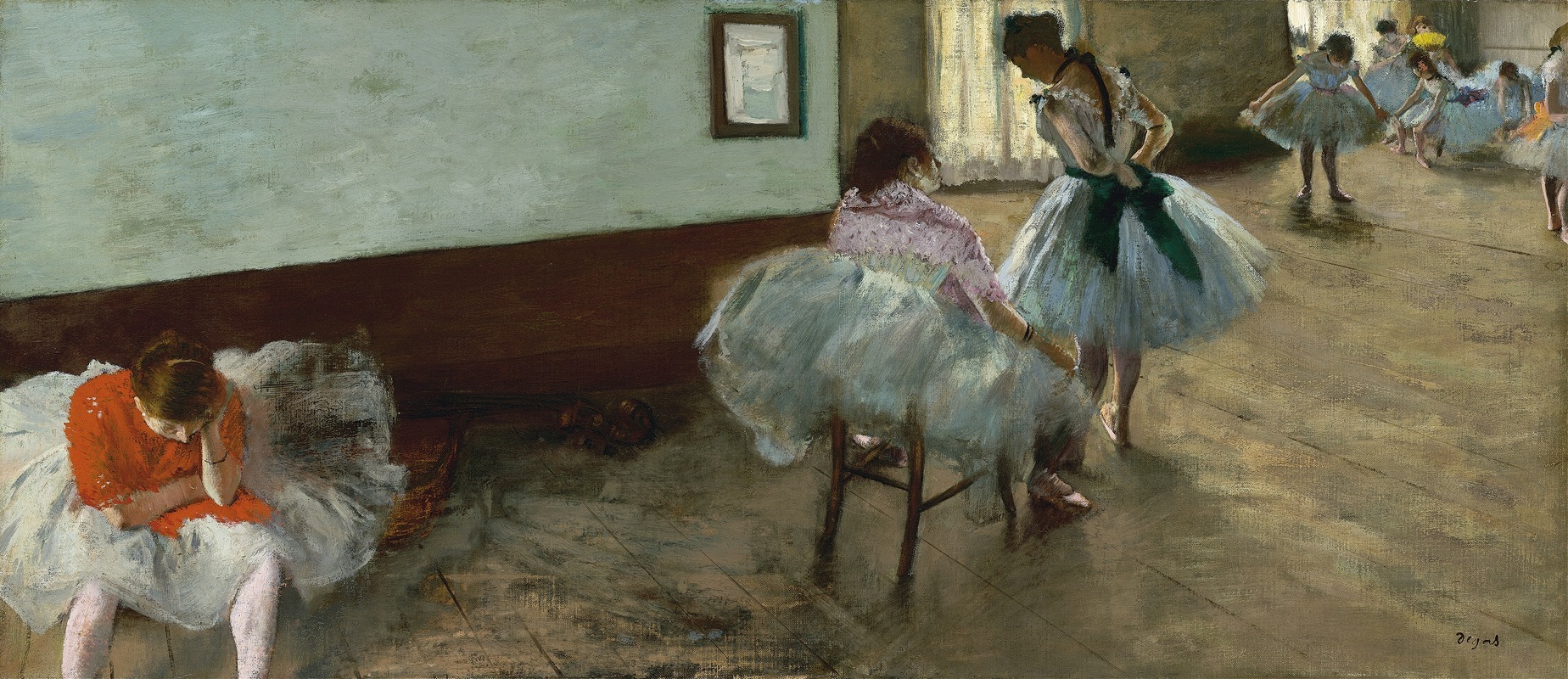
The Dance Lesson
A hand-painted replica of Edgar Degas’s masterpiece The Dance Lesson, meticulously crafted by professional artists to capture the true essence of the original. Each piece is created with museum-quality canvas and rare mineral pigments, carefully painted by experienced artists with delicate brushstrokes and rich, layered colors to perfectly recreate the texture of the original artwork. Unlike machine-printed reproductions, this hand-painted version brings the painting to life, infused with the artist’s emotions and skill in every stroke. Whether for personal collection or home decoration, it instantly elevates the artistic atmosphere of any space.
Edgar Degas, a prominent French artist associated with the Impressionist movement, is renowned for his depictions of dancers, capturing the grace and discipline of ballet. One of his notable works in this genre is "The Dance Lesson," an oil painting completed around 1879. This artwork is a testament to Degas's fascination with the world of ballet and his innovative approach to composition and perspective.
"The Dance Lesson" portrays a group of young ballet dancers in a rehearsal studio, likely inspired by the Paris Opéra Ballet, where Degas frequently observed and sketched dancers. The painting captures a moment of rest or instruction, with dancers scattered across the studio in various poses. Some are stretching or adjusting their attire, while others appear to be listening to a teacher or simply resting. This scene reflects Degas's interest in the behind-the-scenes aspects of ballet, focusing on the hard work and dedication required to achieve the elegance seen on stage.
Degas's technique in "The Dance Lesson" is characterized by his use of soft, muted colors and his attention to detail in depicting the dancers' tutus and the studio's interior. The composition is carefully arranged to guide the viewer's eye across the canvas, creating a sense of movement and depth. Degas often employed unusual perspectives and cropping in his works, influenced by his interest in photography and Japanese prints, which is evident in this painting.
The painting is part of a larger body of work by Degas that explores the theme of dance, a subject he returned to repeatedly throughout his career. His depictions of dancers are not merely portraits of individuals but rather studies of movement, form, and the interplay of light and shadow. Degas's works often convey a sense of immediacy and spontaneity, capturing fleeting moments in the dancers' routines.
"The Dance Lesson" is housed in the National Gallery of Art in Washington, D.C., where it is part of the permanent collection. The painting is appreciated not only for its aesthetic qualities but also for its insight into the world of 19th-century ballet. Degas's works, including "The Dance Lesson," have had a lasting impact on the art world, influencing subsequent generations of artists and contributing to the development of modern art.
Degas's approach to depicting dancers was innovative for his time, as he chose to focus on the rehearsal and practice aspects of ballet rather than the performance itself. This perspective offered a more intimate and realistic view of the dancers' lives, highlighting the discipline and effort behind the art form. "The Dance Lesson" exemplifies this approach, providing a glimpse into the everyday experiences of ballet dancers and the environment in which they trained.
Overall, "The Dance Lesson" is a significant work within Degas's oeuvre, showcasing his mastery of composition, color, and form. It remains a valuable piece for understanding both the artist's unique style and the cultural context of ballet in the late 19th century.







